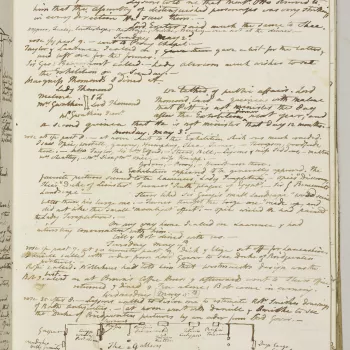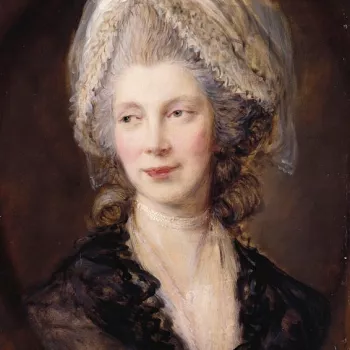George III, Joseph Farington and the Royal Academy
The Royal Academy aimed to revive British arts and crafts
Upon George III's accession to the throne in 1760, artists and craftsmen in Britain were hopeful that the new king would bring about a revival in the fortunes of British arts and crafts through Royal patronage. Artistic societies were established to help foster the arts in the country along continental lines and prints such as Hogarth's Frontispiece to the Society of Artists' Catalogue of Pictures Exhibited in Spring Gardens (1761), reflected this optimism for an artistic renaissance. The image shows the figure of Britannia cultivating a small tree symbolising the arts of painting, sculpture and architecture. The water she uses to tend the plant spouts from a fountain topped by a bust of the new king.
The King himself was keen to support the arts and was patron of several prominent artists of the day including Sir William Chambers, Thomas Gainsborough, Mary Moser, Johann Zoffany and Benjamin West, and as such the Royal Collection contains several works by these significant artists.
In 1768, a split in the Society of Artists allowed for a contingent of prominent artists, led by Chambers and others, to approach the King to seek his patronage for the establishment of an Academy of Arts. The King consented and asked Chambers to provide a charter detailing how this new Academy was to be organised. Chambers did so, and the King signed the document establishing the Royal Academy of Arts on 10 December 1768.
Upon its establishment, the King was greatly interested in the running of the Academy. In 1771 he offered Somerset House, which, despite being a royal residence, was until that time primarily being used for storage, as their headquarters and often attended exhibitions, dinners and even weighed in on some conflicts between artists over the administration of the Academy. He was even responsible for the selection of some of the founder members of the Academy itself, selecting Johann Zoffany and William Hoare as members in addition to the artists included in the instrument laid out by Chambers









